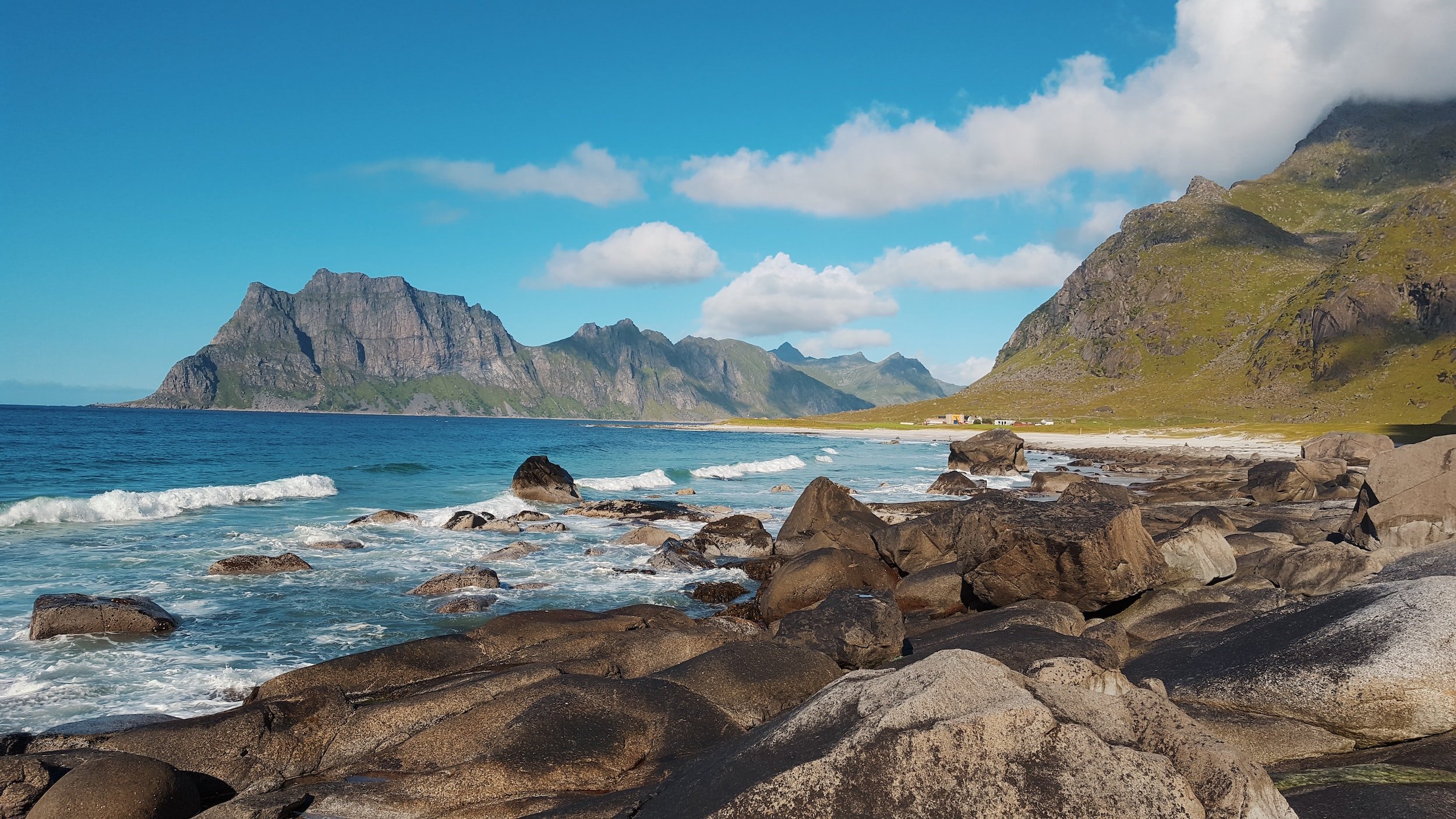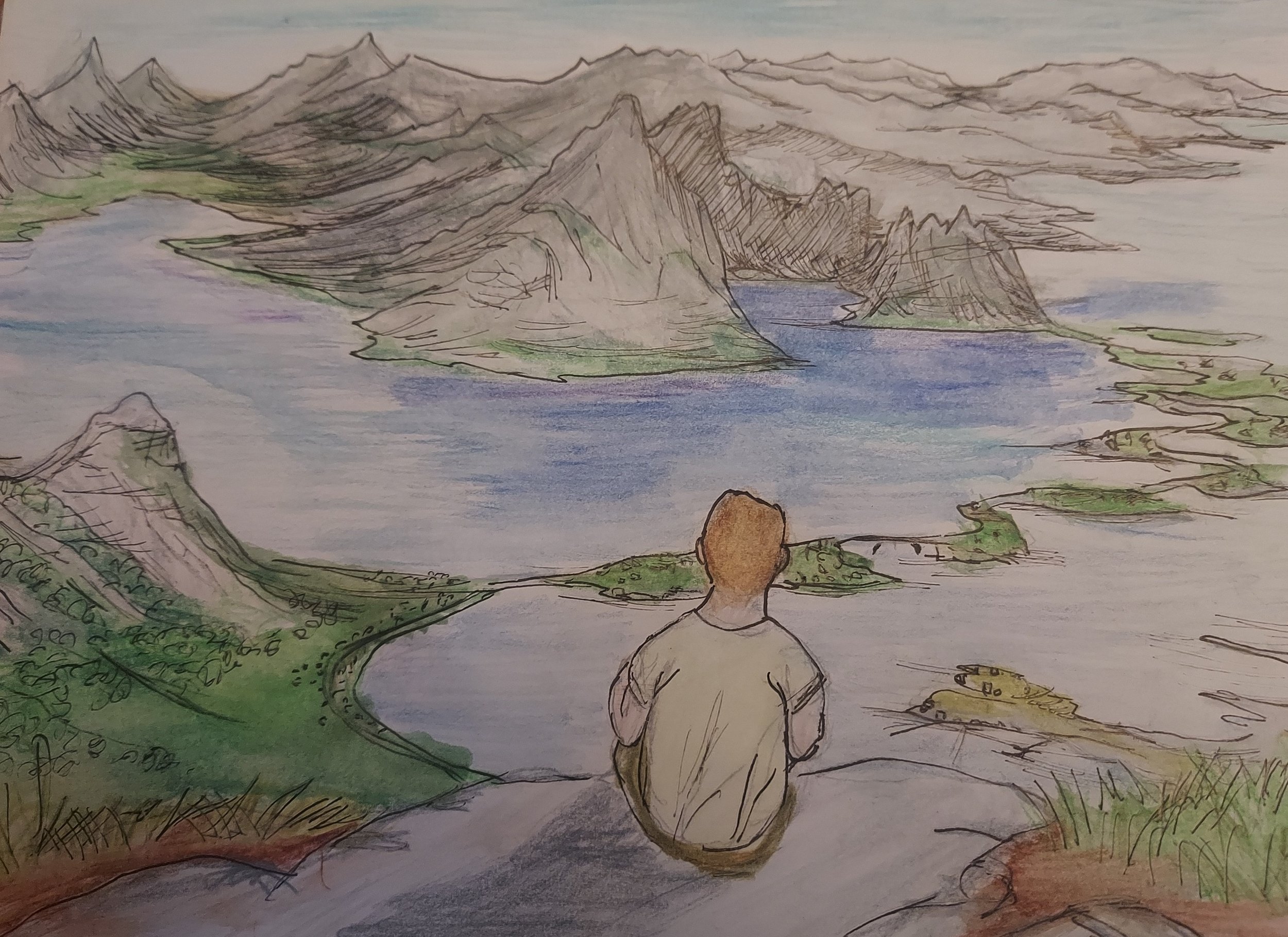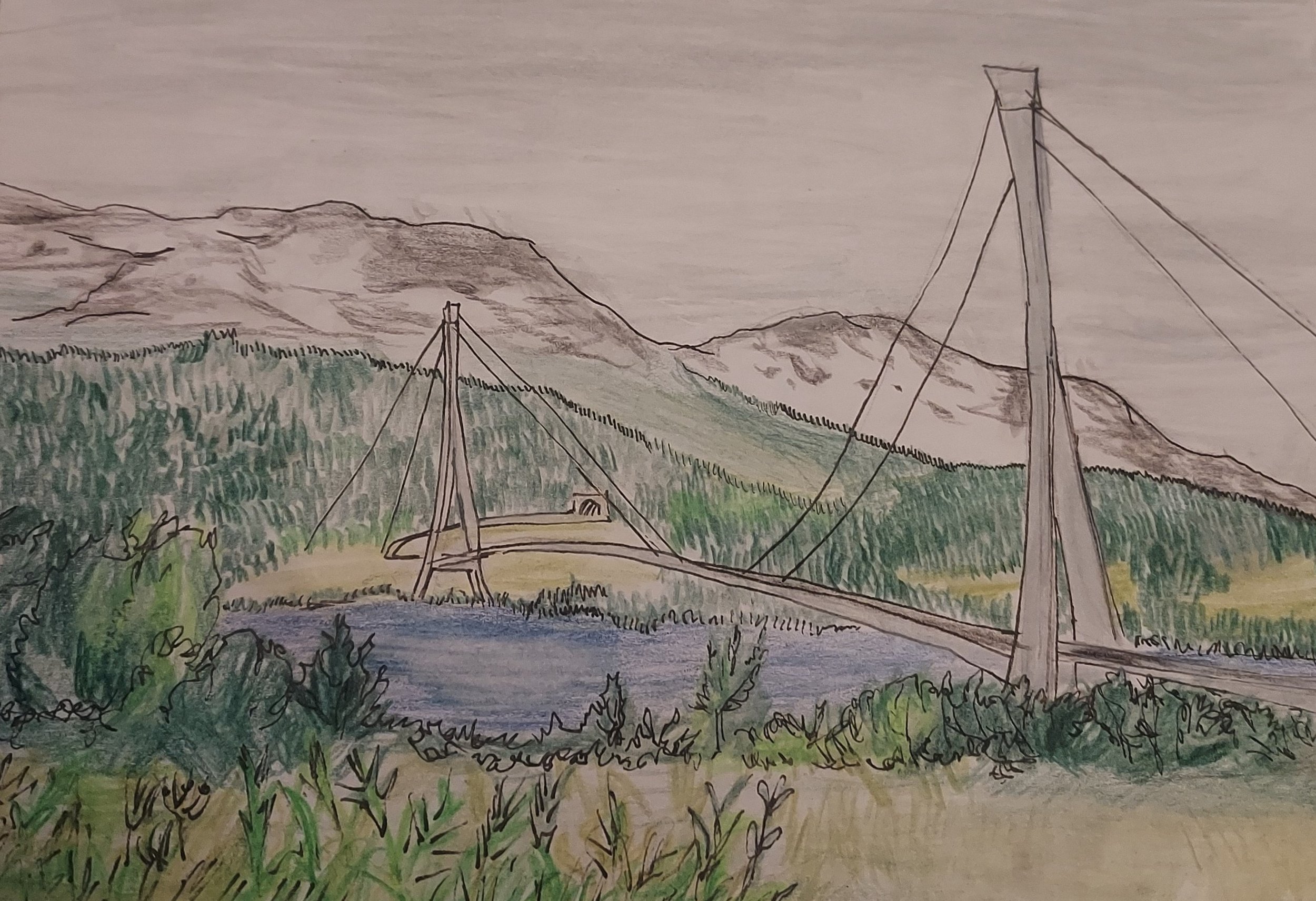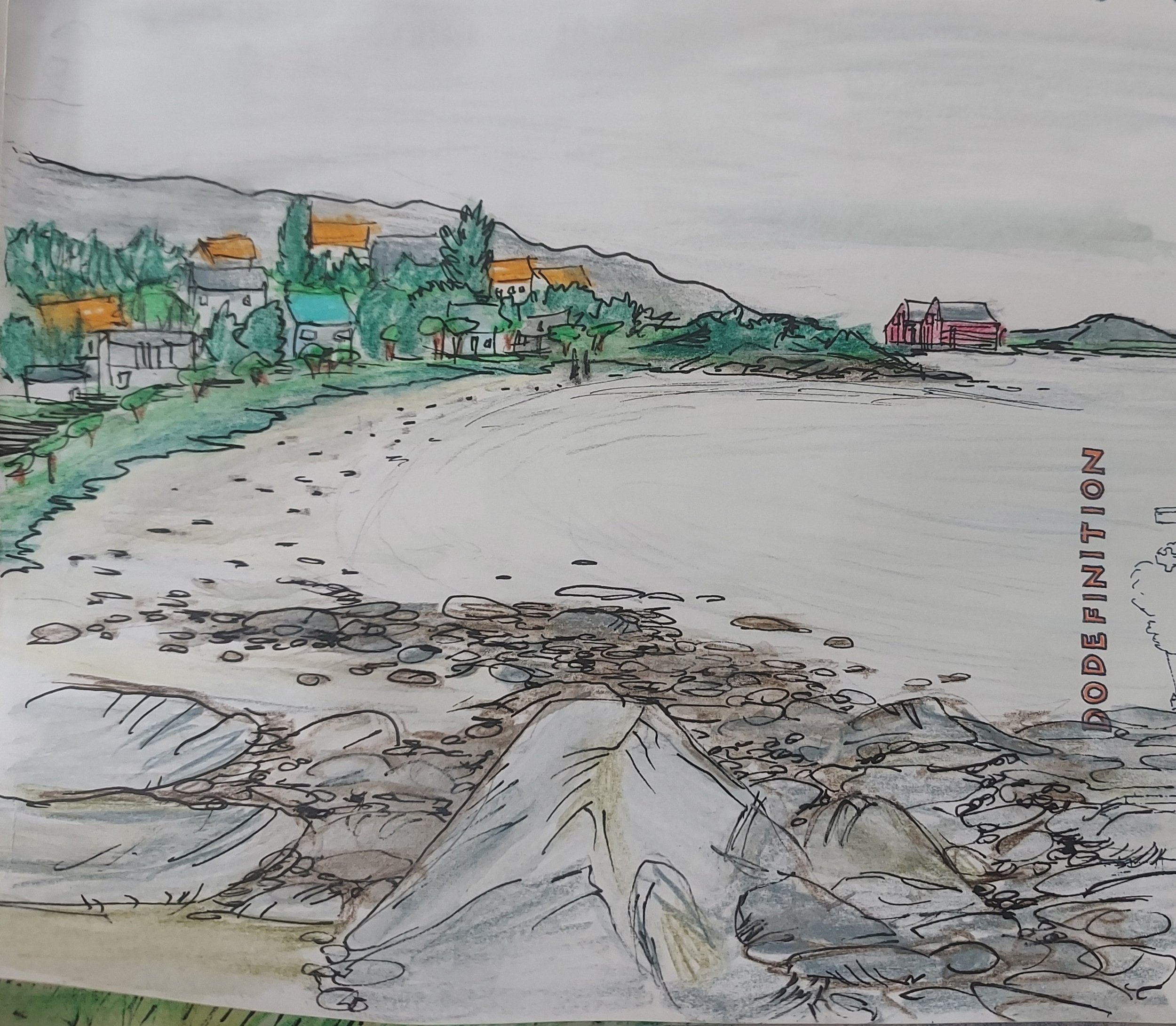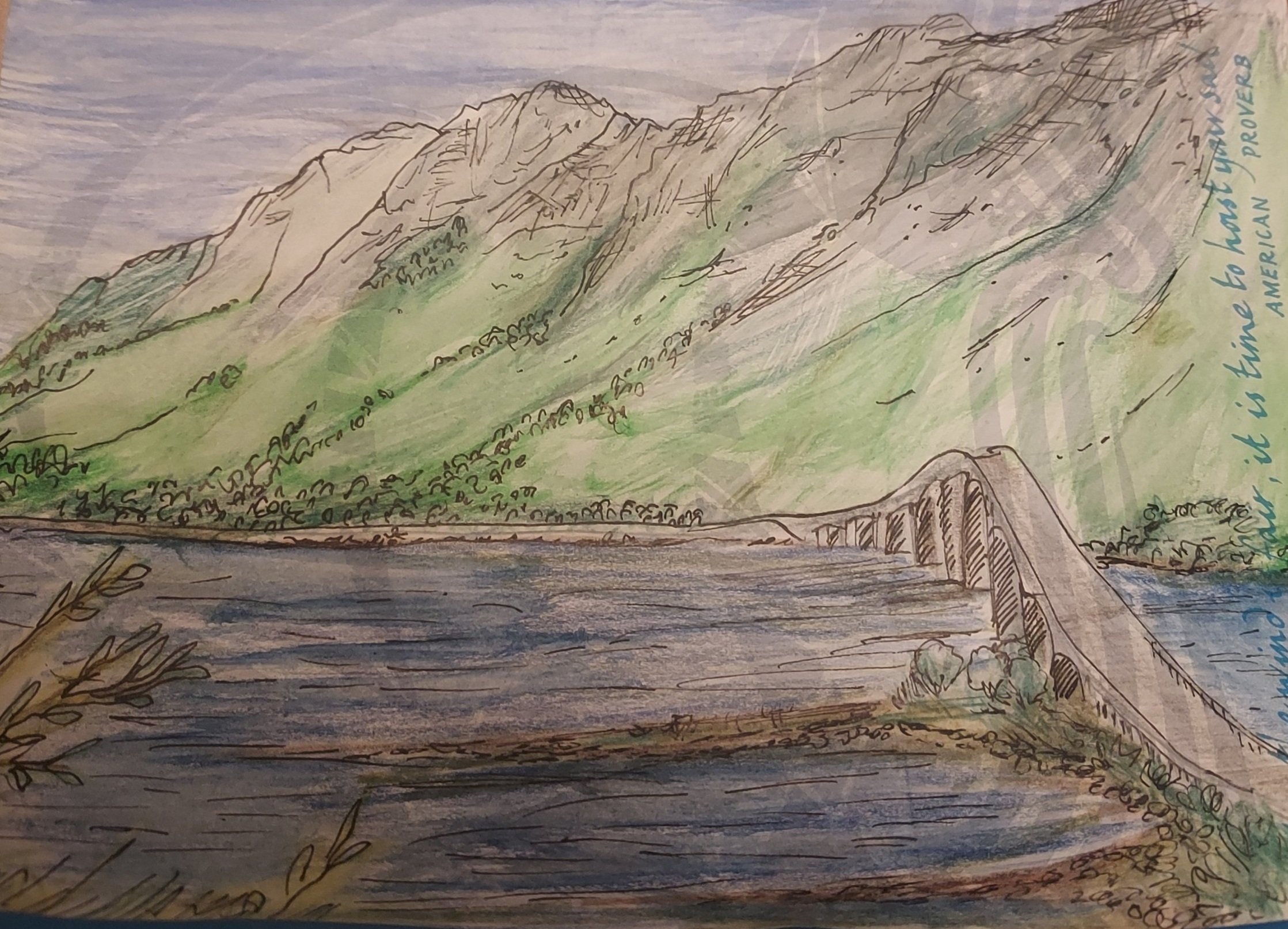Visit the Lofoten Islands in Norway
In July of 2022 I had the pleasure of visiting one of the most spectacular places in the world. The Lofoten Islands are an archipelago, consisting of a chain of 7 main islands in northern Norway, 300km inside the Arctic Circle. They combine spectacular mountainous scenery with beautiful beaches and a fascinating history and culture.
I’ve put together a travel log of how I chose to visit the islands, travelling by hire car and stopping off at some incredible locations along the route from the mainland to the furthest tip of the island chain. As always, please leave any comments or ideas and enjoy!
Getting to the Lofoten Islands
Air travel is certainly the easiest way to reach the Lofoten Islands. It is certainly not the only way. If you have the time and inclination, an epic roadtrip up the west coast of Norway can be made. Alternatively, the Inlandsbanen train in Sweden can take you through the beautiful landscapes of northern Sweden, with a simple cross- border journey needed to make it across to Narvik and the Lofotens beyond.
Many tourists choose to fly to Bodø, and from there take a ferry to the Lofotens or drive up the E10 highway along the coast. We took the option of the slightly closer airport at Narvik. I would discourage you from booking further flights into the Lofoten airports of Leknes or Svolvær (unless you have heavy, specialist equipment which has to come with you), as the arrival onto the archipelago from the Norwegian mainland is part of what makes the experience special.
Norway is a massive country, so there are regional flights to the far north of the country from most of the major cities like Bergen, Oslo and Trondheim.
Hiring a wreck
Once we had touched down at the tiny aircraft hanger which is Narvik-Harstad Airport, we made our way to the carhire location. We had opted for the wonderfully named ‘Rent a Wreck’ whom I’d strongly recommend. Hiring an ‘older’ car offered the best of both worlds, with an easy means to get around the seven main islands of the Lofotens, without the sense of stress which often comes from having to keep a ‘new’ hire car pristine and undamaged.
Safely buckled into our wreck, we set out on the open highway. The E10 (aka King Olovs Vejen) is a high-quality, well-maintained and safe road which runs 230km from Luleå to the wonderfully named Å on the tip of the Lofotens (more on that town later!)
Day 1: Visiting Narvik
We cruised from the airport to our hotel in the centre of Narvik, a 57km journey. Sadly we didn’t have a lot of time to see the town itself, but my parents (who had arrived earlier in the day by train) had time to visit the Narvik Krigsmuseum (War Museum - the town played a key role in the early years of WWII) and modern library.
What we did have time for was a stroll through the quiet streets down to the Langstrand (Long Beach) beside the black waters of the Ofotfjord, where we took the first of many cold swims in the refreshing rain.
We stayed at the Narvik Hotel in the centre of the town, and ate at the lovely Furu Gastropub on the ground floor of the hotel. Once the shock at both the cold water and the Norwegian prices had worn off, it was a great place to stay and eat.
Day 2: Reaching the Lofotens
Before going anywhere we needed to fuel up for the day ahead with a good Norwegian breakfast.
This consisted of strong coffee, orange juice and waffles with syrup - plus optional fish for those who were so inclined!
First stop: Brunost
I would recommend stocking up on road trip lunches and snacks before heading out of Narvik - as large stores and supermarkets are few and far between on the Lofotens.
We chose Norway’s very own Rema 1000 and bought some essentials - plus brunost (I don’t think one can argue it’s essential unless you are a Norwegian!). For those not familiar, this ‘brown cheese’ is a dairy product made from whey, milk and cream. It’s very popular sliced on top of waffles in Norway and has a delicious (in my opinion!) caramelly/nutty flavour.
Next stop: Lødingen
Laden with unessential goods, we set off from Narvik, crossed the architectural beauty of the Hålogalandbrua Bridge (pictured, below) and joined the E10 at Bjerkvik to begin our journey west into the Lofotens.
The views along this stretch of coastline were spectacular, with sweeping views of the fjord and tantalising glimpses of imposing, snowcapped peaks high above us.
The Hålogalandbrua Bridge outside of Narvik
I recommend the village of Bogen for a stopover, where we had a drink and refresh with a view of the strand. It also has a bank, store and hostel if you are planning an overnight stay.
Continuing westwards, we passed tranquil lakes and fir-covered islands, stopping frequently at the roadside to capture the views. By early afternoon the rains were coming down and we stopped for coffee and cake at ‘En Smak av’ (A taste of) in Skánik. The food was great, but our arrival was somewhat like a western film, where all heads of the locals turned to stare at us as we entered….maybe not many tourists stopping off in Skánik!
In the late afternoon we reached the village of Lødingen, the capital of the local municipality. As well as a ‘Vinmonopolet’ (liquor store), convenience store and pizza restaurant, the town has a local school, a museum and a large campsite with beautiful views of the fjord.
We stayed at the ‘Old Harbour Store’ right on the harbourside, a building converted somewhat haphazardly into a bunkhouse for tourists. It was cosy enough though and that evening we enjoyed a bracing swim at the beach before ordering pizza from the surprisingly good Mama Rosa pizza restaurant (although I don’t recommend the bearnaise sauce pizza!).
A fishy history of the Lofoten islands
Before we go any further I’d like to give you a quick look at the history of the Lofotens.
When you look at a map of Norway and see just how far north these islands lie, it is a wonder how major a role they have played in the economy of the country over the past thousand years.
The reason for this?….fish.
The Lofotens have been continuously inhabited since at least 1120, when the Norwegian King Øystein built a church and lodgings for fishermen. It’s this fish industry which has kept the islands inhabited and thriving ever since. Arriving as we did in early summer, one can often smell the fish in the air, even when far from the coastline. This is due to the incredible sight of row upon row of drying cod, called tørrfish, or stockfish.
The seas around the Lofotens are surprisingly mild for its location deep inside the arctic circle, which has led to them becoming hatching site for millions of cod every year. So for the fishermen, there were easy pickings. But having a huge quantity of cod to sell across the world, and sitting almost at the top of the world, is not all that useful. There are ways of preserving the meat like salting, smoking and freezing, but they can be expensive.
Back in the middle ages, some smart residents of the Lofotens found that by hanging the fish in the wind, the meat would dry and then could be stored and transported almost indefinitely, at no extra cost! Once soaked in water, the meat could then be rehydrated and eaten.
This is an incredible method of preserving food that is unique to Lofoten. Many other places have tried but the air is either too wet or too dry and the temperature is either too hot or too cold.
In the middle ages, sales of Norwegian stockfish around the world were huge and the vast majority came from Lofoten. This led to the construction of the rorbu – simple cabins constructed to house the visiting fishermen. These were started in the year 1120 when King Øistein ordered them to be built. These were two-room cabins, often on stilts, right near the water.
The name rorbu roughly translates as ‘small house for people who row’ and they can still be seen in Lofoten today. Nowadays they’re not so much cabins to house travelling fishermen but simple – and sometime luxurious – accommodation for the tourists.
Row upon row of drying stockfish, fixed to wooden frames for the Norwegian winds to blow between. Triangular wooden structures like this line the coastlines of the Lofotens.
Day 3: Travelling to the tip of the Lofotens
We had arrived in Lødingen in heavy fog, so the sight which greeted us from the harbourside in the morning was perhaps even more spectacular, having been deprived of it the previous evening.
Vast snow-capped mountains lined the horizon, with the brilliant blue waters of the fjord spread out infront. After the rain and sleet, it was glorious to have a clear blue sky to set off into the crisp morning air.
It is hard to describe the stunning views on this leg of the trip, as one reaches the jaw-dropping peaks and scattered islands which one associates with the Lofotens. We weaved our way along the E10, feeling like an ant traversing its way across the landscape, dwarfed as we were by the cliffs and valleys which rose around us.
I would recommend stopping at Eggum, a lovely fishing town with a secluded beach. Further south-west laong the E10 is Flakstad, a great place for a swim and amazing hot chocolate with homemade cookies in the surf shop (Lofoten Beach Camp). There is also a popular campsite here and glorious views from the Skagsanden Beach.
Despite wanting to stop at every layby for a glimpse of more gorgeous coastline, we pressed on into the evening along the winding roads.
We reached Sørvågen in the late afternoon, a picturesque fishing village centred around a working harbour filled with beautiful red fisherman’s huts called Roboer. Many of these have now been converted into B&B and hotel rooms, one of which we stayed in. Sørvågen is a delightful place to stay and the one place on the Lofotens where I would have wanted to stay more than 1 night. There is a large store (‘Joker’) to stock up, several hostels and guest houses, as well as multiple trailheads for hikers to set out on conquering some of the extraordinary peaks that surround the tiny houses.
We enjoyed a great beer in the local pub, Maren Anna, which has a lovely beer terrace looking out onto the harbour. Although we didn’t eat there outselves, it also had a nice menu with good Google reviews. Then was a short hop back in the car to the village of Å, at the very end of the E10 highway.
The settlement itself doesn’t have much to show for itself, but there are beautiful panoramic lookout points looking back east towards the mainland and west towards the remaining land of the Lofotens. We took a stroll in the evening sunshine before heading back to our roboer.
Day 4: Up to Harstad
It was our final day on the Lofotens so we were determined to make the most of it. We woke at 5am (it was July so daylight was already streaming into the room and the sun was up!), and drove a short distance to the trailhead of Reinebringer. We’d read about the views from the top but it’s hard to do it justice without you climbing yourself. 1000 steps hewn into the rock led us up to the absolutely incredible views eastwards of fjords and peaks beyond, with the settlements of Reine and Hamnøy like tiny lego towns far beneath you.
A quiet moment of contemplation for me at the top of Reinebringer
We were headed for Harstad, so knew we had a drive ahead of us. Descending from the Reinebringer we jumped into the car and hit the open road, stopping off at the secluded and picturesque beach at Hankland for swim, then through a sheer rockface tunnel to Uttaklev beach just beyond the headland from Hankland.
I would absolutely recommend the Gamla Skola in Grundstad, an old schoolhouse which offers delicious meals, as well as fresh cakes, pastries and coffee, with a children’s play area to the side of the dining room. After the delicious stopover, we headed north to Flesnes, leaving the larger peaks of the outer Lofotens behind us as we took the car ferry over to Reefnes.
Thirty minutes drive later and we were in the provincial capital of Harstad, a town with a population of 20 000 people. We dropped off our beloved Rent a Wreck car, checked into our hotel and prepared for the next leg of our exciting Nordic journey….the Hurtigruten ship (travel log coming soon!).
I hope you enjoyed this account of travelling around the Lofoten Islands. Anything I missed or anything you’d like to add? Let me know in the comments below!
Exploring more of Scandinavia
If you want to get more of what to do and see out in nature, check out my guide to the Klampenborg park north of Copenhagen, a great spot for mushroom foraging.
Or find out some of the best spots for wild swimming in Copenhagen, from purpose-build lidos to world-famous beaches.
Want to escape the cities for a while? Check out my guide to the best Iceland roadtrip below:




